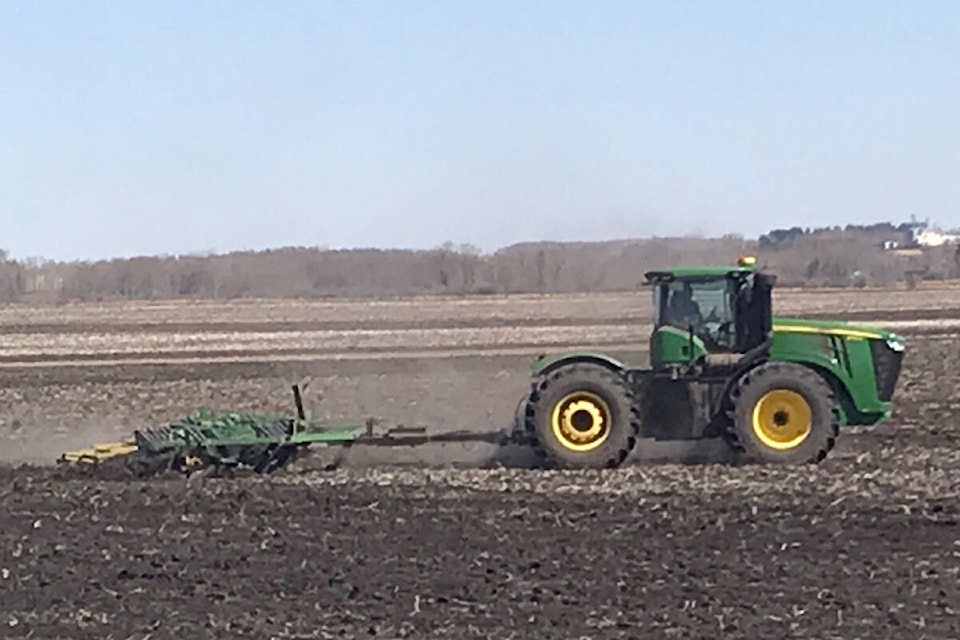Heading into spring, farmers will be doing some serious number crunching as a number of input costs are on the rise.
This month, Alberta Financial Services Corporation (AFSC) told producers to expect higher premiums this crop year. The increase is mainly linked to higher crop prices, growth in the number of producers participating in the program and the ongoing effects of the 2021 drought.
The increase in premiums in the federally and provincially supported insurance program is expected to average about 22 per cent. Increases vary between crops. For instance, premiums for hard red spring wheat are expected to go up 17 per cent but only two per cent for yellow field peas.
Producers also have a variety of options when buying crop insurance, which affects how much they pay.
Higher fuel costs and interest rate increases will also become part of the farm math as producers look ahead to seeding.
Jim Wood, who farms and raises cattle in the Delburne area, said premiums can be a significant cost for a producers.
“Hopefully, they are not rising at any outstanding rate. I would hope they would be minimal,” said Wood, who has not yet seen what increases he may face.
As is always the case in the notoriously unpredictable business of farming, where national and global economic forces, geopolitical tensions and Mother Nature’s mischief making often all play a role in determining good, bad or average years.
“As far as where I see us heading this year, it’s kind of uncertain,” said Wood, who is mayor of Red Deer County.
Commodity prices rose last year, but have started to come down again. “To what level that will materialize out at, I don’t know.”
One of the challenges for many producers is that they pay for their input costs in the prior year.
“If fertilizer prices are starting to decline, that may not help everybody because they have already bought that fertilizer at a higher price.”
Interest rates could be the biggest wild card.
“A lot of business owners, including farmers borrow money. So, a significant interest rate rise can change their bottom line significantly.”
Rising interest rates could hit young farmers hard who are not locked into a mortgage with better rates and are already facing high land prices.
“For those that are carrying the cost of putting a crop in, if it’s borrowed money at all, will see significant costs.”
When fuel and fertilizer prices are higher than normal at the same time that it’s more expensive to borrow the impact gets magnified, he said.
“Every farmer is in a different position. Some may not be affected, but it will affect a lot.”
Olds-area grain farmer Jeff Nielsen said the availability of some herbicides and pesticides might also drive up prices this season. The situation has not been helped by a decision by the Pest Management Regulatory Agency (PMRA) recently changed approved uses for a common pesticide that many farmers rely on to control grasshoppers and flea beetles.
Among other changes, the pesticide can no longer be used for any crop that may end up as livestock feed. As a result, its manufacturers have pulled their products from Western Canada.
“We’re losing some of the tools we need to protect our crops. The reasoning isn’t science. It’s more the public perception of some of these products.”
The Alberta and Saskatchewan governments are urging the agency to lift the restrictions.
Nielsen said he’s been hearing that herbicide and pesticide costs may be on the way up.
“On the fertilizer side, I think we’re seeing prices coming down,” he said.
“But it’s still not there yet, where I think it should be because natural gas prices are so low. We don’t have a lot of players in the fertilizer market so are they going to cut their costs any more to the producer? That’s a good question.”
In the second quarter of 2022, fertilizer costs nearly doubled on average, compared with the same quarter in 2021, according to Statistics Canada. It was the largest year-over-year price increase for fertilizer since 2008 and was driven largely by the war in Ukraine, a major world fertilizer supplier.
That crop insurance premiums are going up is not a surprise. For instance, AFSC has put a higher value on canola this year than last year, which means higher premiums.
“I look at it as a risk management tool. Is it going to be more expensive this year? Probably, but you’re getting better coverage on those crops.”
Nielsen said interest rates will affect a lot of bottom lines, but farmers have seen much worse, he said.
“Me as a 20-year-old farmer in 1980, I saw my dad get hit by 22 per cent interest rates. There’s nothing we can do about interest rates. It’s just another one of those costs.”
The federal government has stepped in to ease some of the financial pressure. The Advanced Payments Program offers up to $1 million per year in advances depending on anticipated revenues from crops or other agricultural products.
The interest on the first $250,000 has now been covered by the federal government for the 2022 and 2023 crop years.
